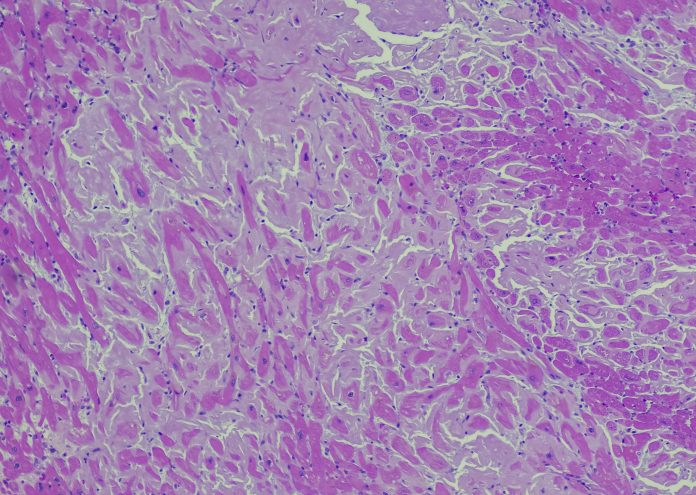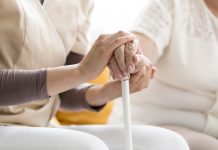In this interview, Abbas Kanani, MRPharmS, Superintendent Pharmacist at Chemist Click, tells us about amyloidosis, a group of rare diseases in which abnormal proteins deposit as amyloid in tissues and organs
Abbas Kanani, Superintendent Pharmacist at Chemist Click Online Pharmacy, spoke to Open Access Government about amyloidosis, a group of rare diseases in which abnormal proteins deposit as amyloid in tissues and organs.
With research, are we learning more about the different types of amyloidosis, developing new treatments, and raising awareness to help everyone affected? To what extent do signs and symptoms vary depending on the type of amyloidosis? Can different proteins cause amyloidosis? How is amyloidosis treated?
These intriguing questions are unpacked here by Abbas Kanani, who closes the interview with his thoughts on investigating amyloid protein build-up in the brains of people living with Alzheimer’s disease.
Tell us about amyloidosis, a group of rare diseases in which abnormal proteins deposit as amyloid in tissues and organs
The abnormal proteins, called amyloid, can be formed from different parts of the body and can affect various organ systems. The build-up of amyloid proteins (deposits) can make it difficult for the organs and tissues to work properly.
With research, are we learning more about the different types of amyloidosis, developing new treatments, and raising awareness to help everyone affected?
Yes, research is ongoing to learn more about the different types of amyloidosis, develop new treatments, and raise awareness to help people affected by the disease. Researchers have been studying the use of monoclonal antibodies, which are lab-made proteins that can target and bind to specific cells or proteins, as a treatment for amyloidosis. In addition, new drugs are in development to target the specific proteins that cause amyloidosis.
In 2022 the U.S. Food and Drug Administration approved AMVUTTRATM, a classified as a gene-silencer, aiming to inhibit the production of the transthyretin (TTR) protein in the liver, thereby reducing the levels of TTR in the body, preventing amyloid build-up and organ damage.
There are several organizations working to increase public understanding of amyloidosis, helping to fund research, and provide educational resources and support for those affected. Overall, with continued research, it is expected that new treatments will be developed and the understanding of amyloidosis will be improved, ultimately leading to better outcomes for patients affected.
To what extent do signs and symptoms vary depending on the type of amyloidosis?
The signs and symptoms of amyloidosis can vary depending on the type of amyloidosis and the organ or tissue affected. Generally, symptoms of amyloidosis can include weakness, fatigue, weight loss, and enlargement of the liver or spleen.
- AL amyloidosis affects organs such as the heart, kidneys, nerves, gut, skin and tongue.
- AA amyloidosis usually affects the kidneys, liver and spleen
- Familial ATTR amyloidosis usually affects the heart and nerves
- Wild-type ATTR amyloidosis usually affects the heart.
Can different proteins cause amyloidosis?
There are around 30 different proteins which can cause amyloidosis.
- AL (primary) amyloidosis is caused by amyloid light chains. The cause is unknown but it happens when the bone marrow produces abnormal antibodies that cannot be broken down.
- AA (secondary) amyloidosis is caused by amyloid type A protein. This protein is produced in response to infection or inflammation. It can be caused by amyloid deposits over a long period of time. Conditions associated with chronic inflammation such as rheumatoid arthritis or chronic TB can cause AA amyloidosis over the course of many years.
- Familial ATTR amyloidosis is linked to genetic defects. As an example, mutated proteins such as transthyretin (TTR) is normally the cause. Everyone makes transthyretin, however, the mutated version is most likely to cause amyloidosis.
- Wild-type ATTR amyloidosis is similar to familial ATTR amyloidosis, but the protein deposited is not mutated. It usually develops in older people above 65 years.
There are also rare types of amyloidosis which are caused by other proteins, including amyloid beta, which is associated with Alzheimer’s disease.
How is amyloidosis treated?
Unfortunately ,there is no cure, and the deposits cannot be directly removed. The aim of treatment is to prevent the production of more abnormal proteins and treatment of symptoms.
Treatment options for amyloidosis include:
- Chemotherapy: This is the main treatment for AL amyloidosis, which is caused by an abnormal protein called immunoglobulin light chain. Chemotherapy drugs are used to kill the cells that produce the abnormal protein.
- Stem cell transplantation: This procedure involves using high-dose chemotherapy to destroy the cells that produce the abnormal protein, followed by a stem cell transplant to replace the destroyed cells with healthy cells. This treatment is mainly used for AL amyloidosis.
- Immunomodulatory drugs: These drugs, such as thalidomide and lenalidomide, are used to reduce the production of the abnormal protein in AA amyloidosis.
- Monoclonal antibodies: These are lab-made proteins that can target and bind to specific cells or proteins. Some monoclonal antibodies are being studied for the treatment of amyloidosis, including amyloid light-chain amyloidosis.
- Protein-directed therapies: These therapies are designed to specifically target the proteins that cause amyloidosis.
- Supportive care: This can include measures to manage symptoms and prevent organ damage, such as diuretics to reduce fluid build-up or medications to control heart failure or other complications.
Finally, what are your thoughts on investigating amyloid protein build-up in the brains of people living with Alzheimer’s disease?
There is a theory to suggest the Alzheimer’s disease is caused by the accumulation of amyloid beta protein in the brain.
Research into this area can help to provide insight into this area, with the view of creating a cure.
Some drugs being developed for Alzheimer’s disease specifically target amyloid beta, with the goal of reducing the build-up of this protein in the brain. These drugs are called Beta-amyloid targeting therapies, and they are in different stages of clinical trials.
Additionally, imaging techniques such as PET scans can be used to visualize amyloid plaques in the brain, which can help with early diagnosis and monitoring of the disease.
Although amyloid beta build-up is a hallmark of Alzheimer’s disease, it is not the only factor that contributes to the development of the disease and other mechanisms like tau protein and neuroinflammation also play a significant role.









My grandma has Parkinson’s disease, she is about 75 years old it was detected 7 years ago. Right now it’s getting more difficult to live for her, because of stiff muscles she can’t even move. L-dopa and carbidopa medicines are given, but won”t give much relief. She can”t eat food and the skin is damaging forming ganglia. I thought this might be the last stage and the medications she was given did not help at all, so I started to do alot of research on natural treatments, I was introduced to Health Natural Centre and their Parkinson’s Herbal Protocol. She started on the Parkinson’s Treatment last year, her symptoms gradually diminished including her Tremors, Body Weakness and Muscle Pains. Reach them at healthnaturalcentre.org , She is getting active again since starting this treatment, she is able to walk again ( down the street and back ) and able to ride her treadmill again! God Bless all PD Caregivers. Stay Strong, take small moments throughout the day to thank yourself, to love your self, and pray to whatever faith, star, spiritual force you believe in and ask for strength. I can personally vouch for these remedy but you would probably need to decide what works best for you.